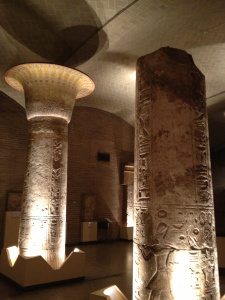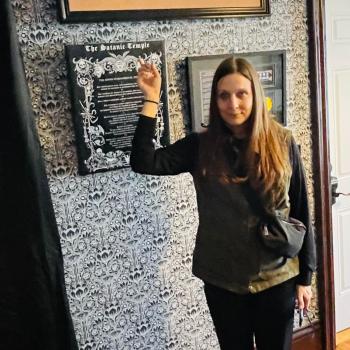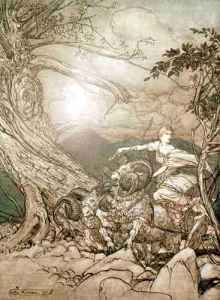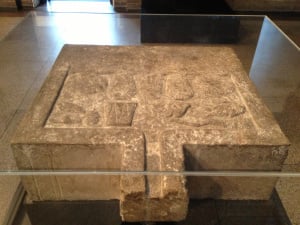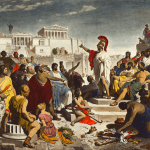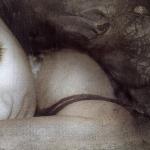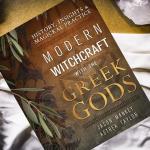I just got back from a trip to Philadelphia for work. I was fortunate to be able to squeeze in a little me-time and I hit three different museums.
My first stop was the Franklin Institute, which I cannot recommend, but they had a temporary exhibit of the Dead Sea Scrolls. The exhibit ends tomorrow, so I was luck to catch it. Unfortunately we were not allowed to photograph the scrolls themselves. The two photos below came from the website:
The exhibit was pretty good. They did a good job of making the experience a sacred one, and you could tell that it was just that for many of the patrons.
They did have a very nice intact example of the female pillar figurines from Palestine. The lighting was dimmed to enhance the sense of sacredness, but unfortunately that meant the artifacts were hard to photograph.
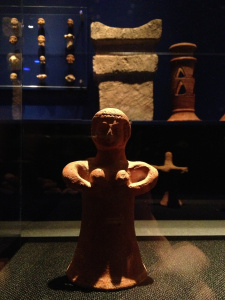
There were a lot of artifacts from Lachish, but I was disappointed that they did not have the Lachish ewer, which is probably my third favorite artifact from this region. (My favorites are the Taanach stand and a goddess figurine from Revadim.)
I then headed over to the University of Pennsylvania Museum of Anthropology and Archaeology. They have a temporary exhibit of Mayan artifacts. They included several large stela. Unfortunately most of the cooler artifacts were replicas. There was a page from the Dresden Codex, the finest surviving Mayan book, from 1300-1500 CE. The first page illustrates the destruction of the world at the end of the solar year followed by four pages showing the ceremonies to introduce the new year.
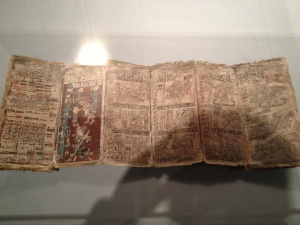
This altar was cool, but kind of creepy when I started to imagine what might have been sacrificed on it:
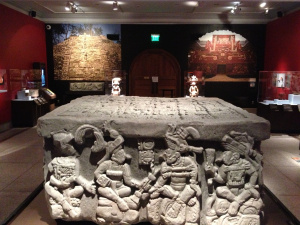
They also had permanent exhibits from around the world. The Canaanite exhibit was especially interesting to me. It had a small but fascinate collection of goddess plaques like this one:
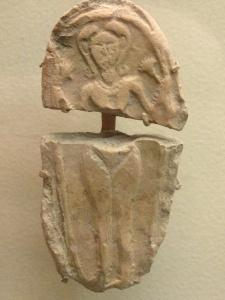
Here is a particularly beautiful figurine of what appears to b a pregnant woman:
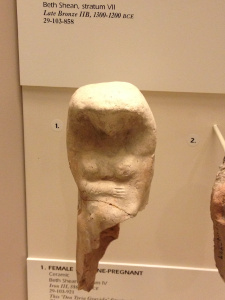
Below is the butt of a processional staff next to a (possibly female) figurine. But when I saw these together, I saw the Neopagan god and goddess.
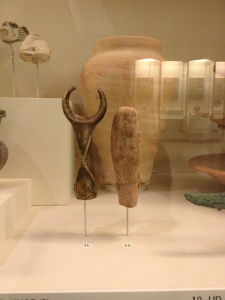
Probably the best collection they had was the Greek/Roman section. They had several good examples of amphora and other vases, including the red figures style. This one was my favorite:
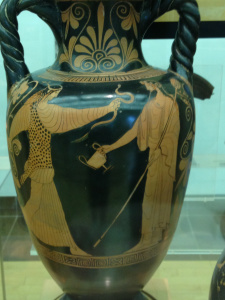
This side depicts Dionysus and a maenad.
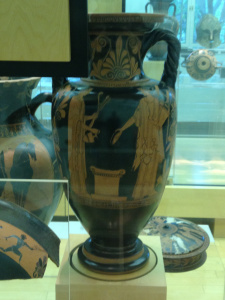
Note that the picture above shows two gods pouring libations, something I have written about before here, “Who do the gods sacrifice to?”.
The Egyptian section was interesting too. They had a cool exhibit of columns covered in hieroglyphs.
I thought this sarcophagus lid was interesting too. It shows the goddess Nut (who swallows the sun in the evening and gives birth to him in the morning) on the inside of the lid. (You have to zoom in and look close to see her arms and body, but her head is clearly visible.)
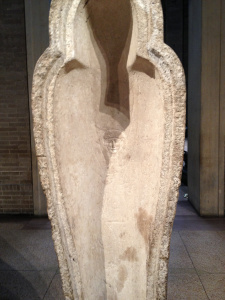
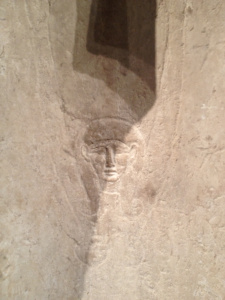
For some reason I find what is on the inside of the lid even more interesting than what is on the outside.
Finally, I went to the Rodin Museum which has the largest collection of Rodin sculptures outside of Paris. I could have stood for an hour in front of the “Gates of Hell” which is on the entrance to the museum.
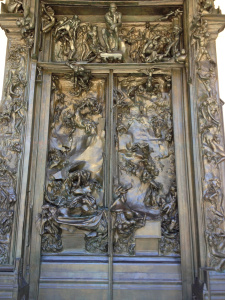
Below are some details of the left and right panels that give a better sense of the three-dimensionality of the work. Standing beneath it I have a vertiginous feeling combined with a strange desire to climb up the wall.
As I tried to take pictures, I realized that what is unique about Rodin is that most of his sculptures do not have a “front”. It is difficult, if not impossible, to capture the work in a single photograph. Even a panoramic series of photographs often does not do it justice. There is an interiority to many of Rodin’s works, especially those showing multiple figures, so you get the feeling that the real “event” being depicted is actually hidden between the figures.
This one is one of my favorites, which actually is two separate pieces from the “Gates of Hell” placed together by Rodin to create a new work.
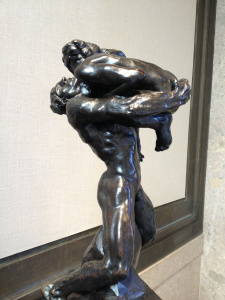
This one was also interesting. It is of two figures (male and female?) in a (violent or erotic?) embrace. The closest figure appears to be a faun or demi-human and the other figure has oversized arms and hands.
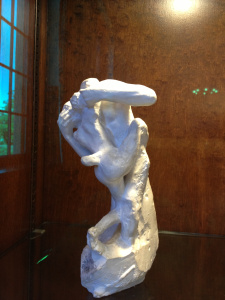
I was not at all impressed with the city of Philadelphia, but they did have some good museums.



